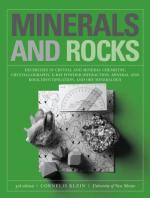|
This section contains 573 words (approx. 2 pages at 300 words per page) |

|
X-ray crystallography is a process by which the extremely fine atomic structure of many crystals can be examined and recorded. It was first developed not as a research tool but as a means of determining the nature of x rays themselves.
X rays were discovered—quite accidentally—in 1895 by Wilhelm Röntgen (1845-1923). Although his intensive research revealed much about the properties of these new rays, such as their ability to penetrate certain substances, Röntgen could not ascertain whether x rays consisted of particles or longitudinal waves. This question puzzled scientists until 1912, when German physicist Max von Laue (1879-1960) directed an x ray beam through a crystal. As the X-ray struck the lattice-like pattern of atoms within the crystal, an interference (or diffraction) pattern was formed--an effect that could only occur if x rays were waves, like light.
Laue's experiment proved...
|
This section contains 573 words (approx. 2 pages at 300 words per page) |

|


